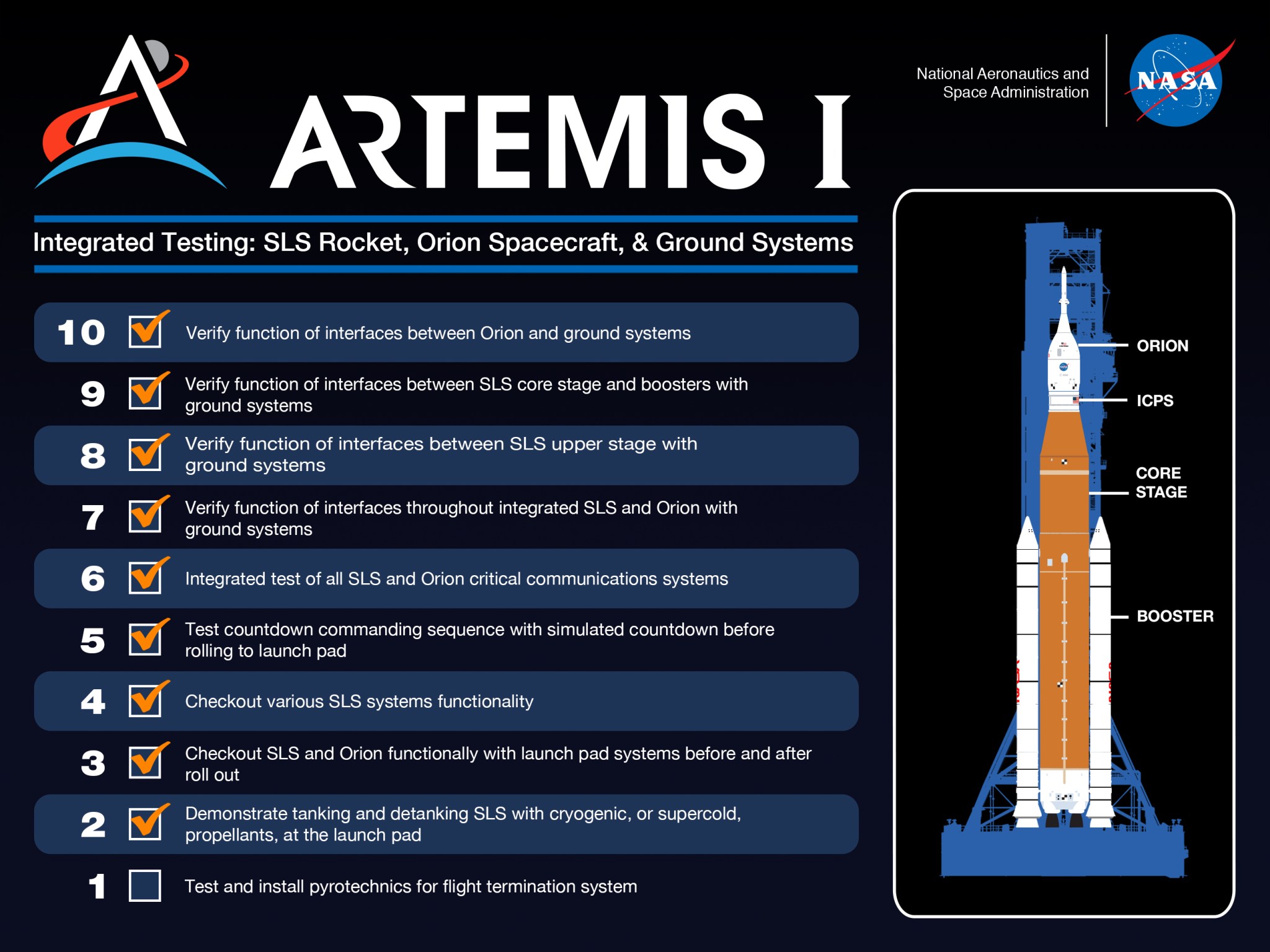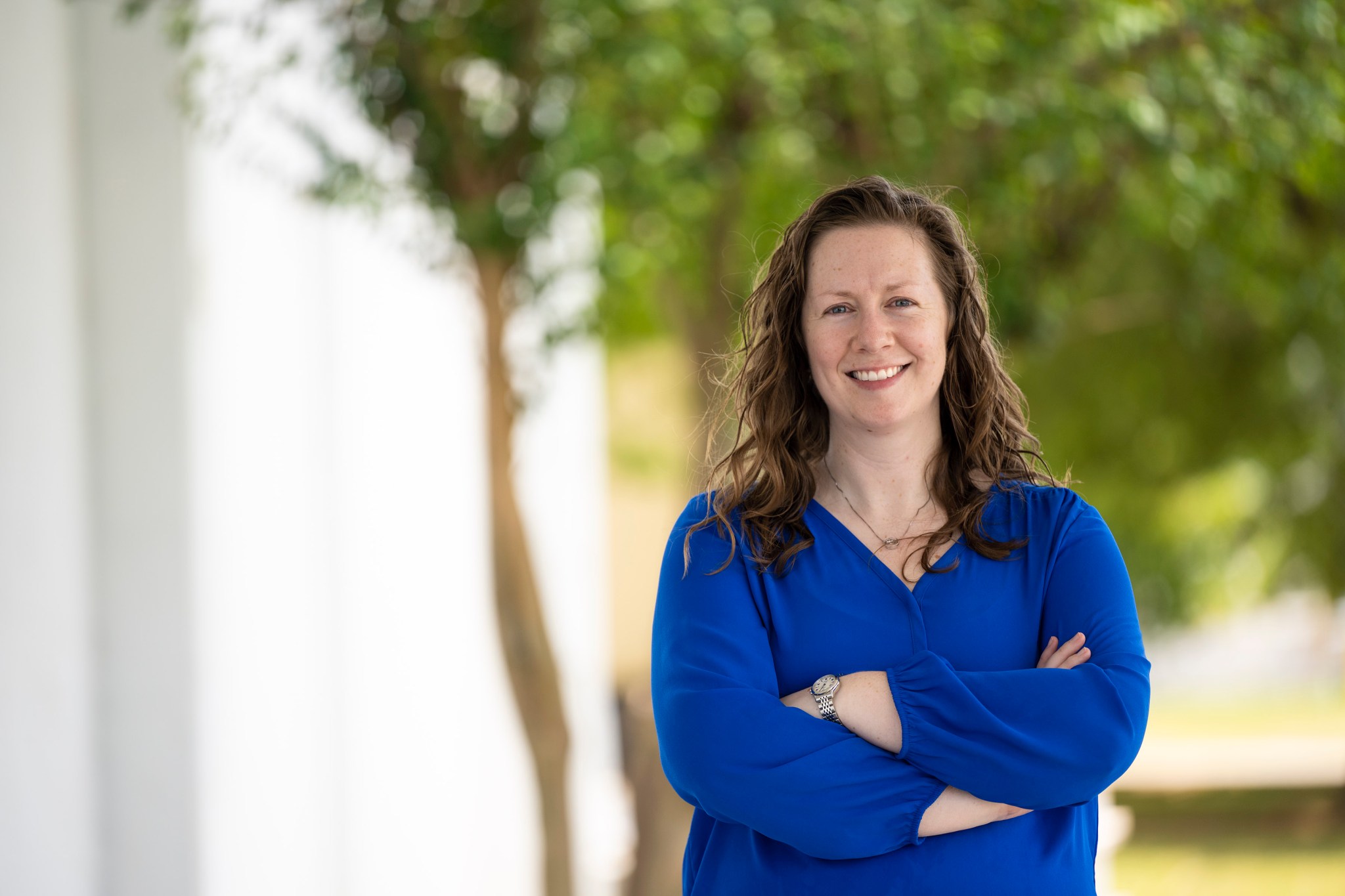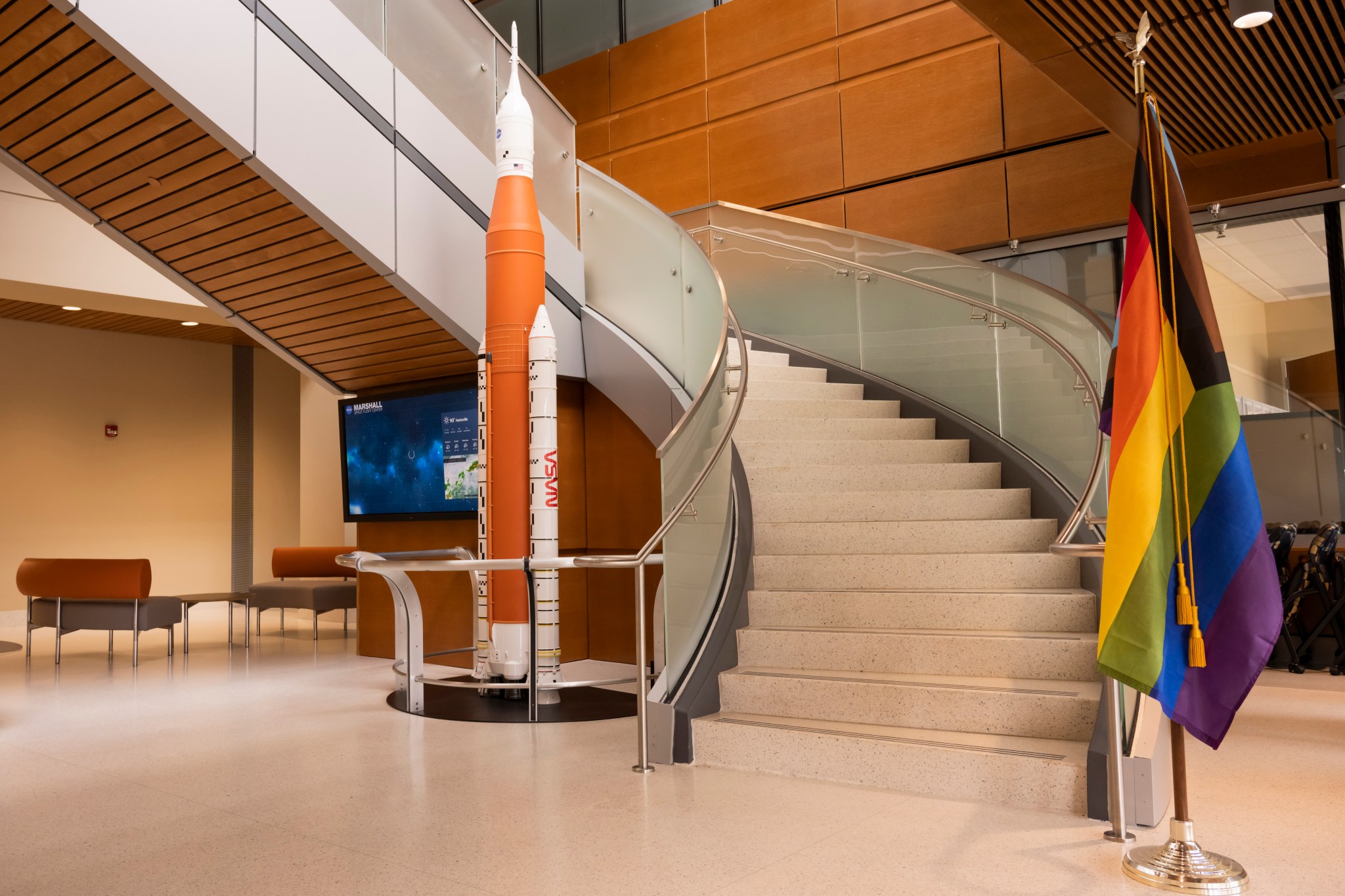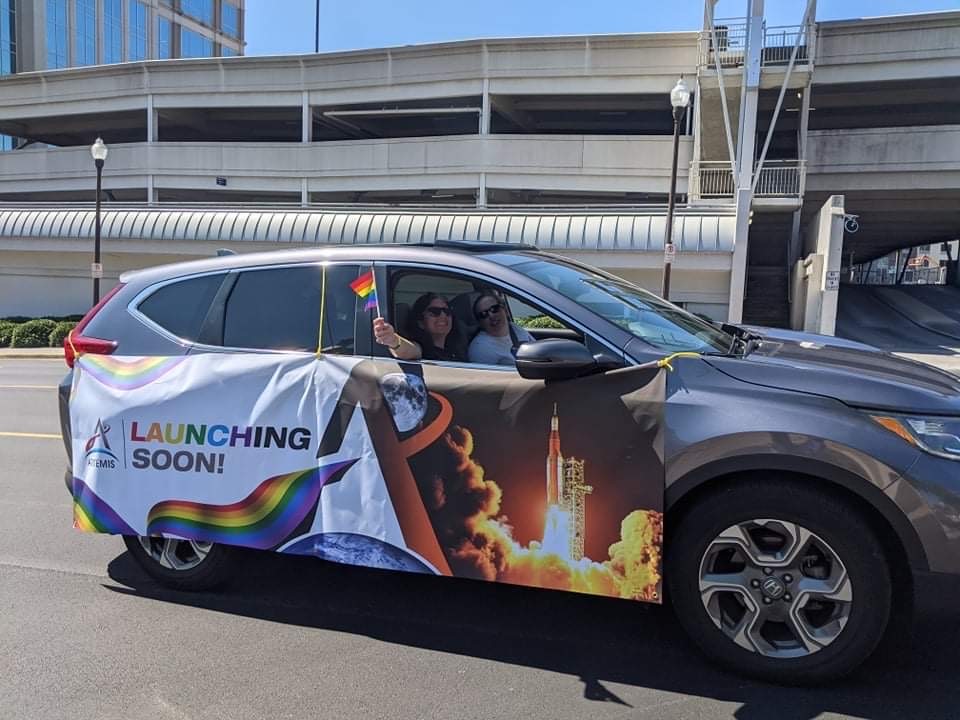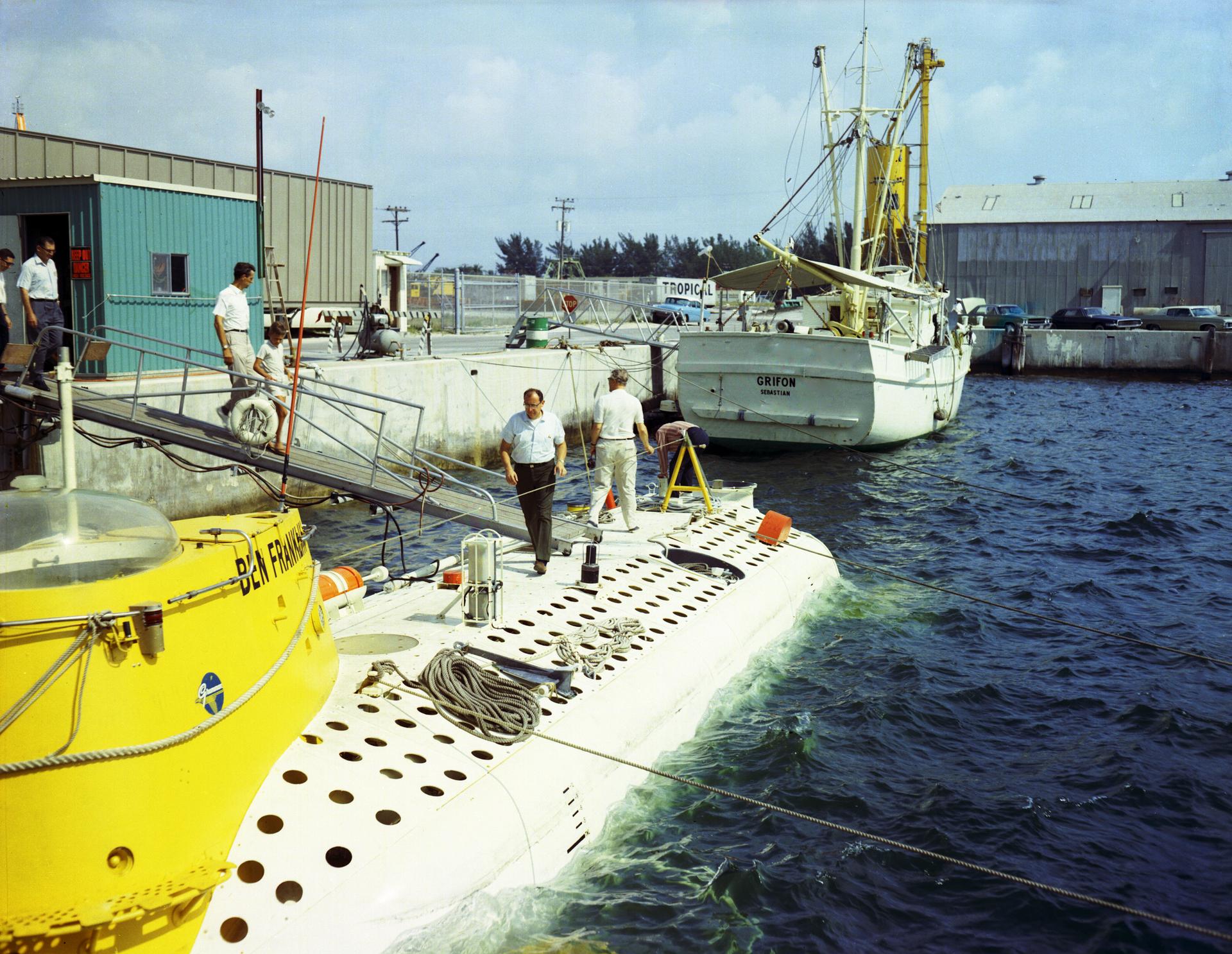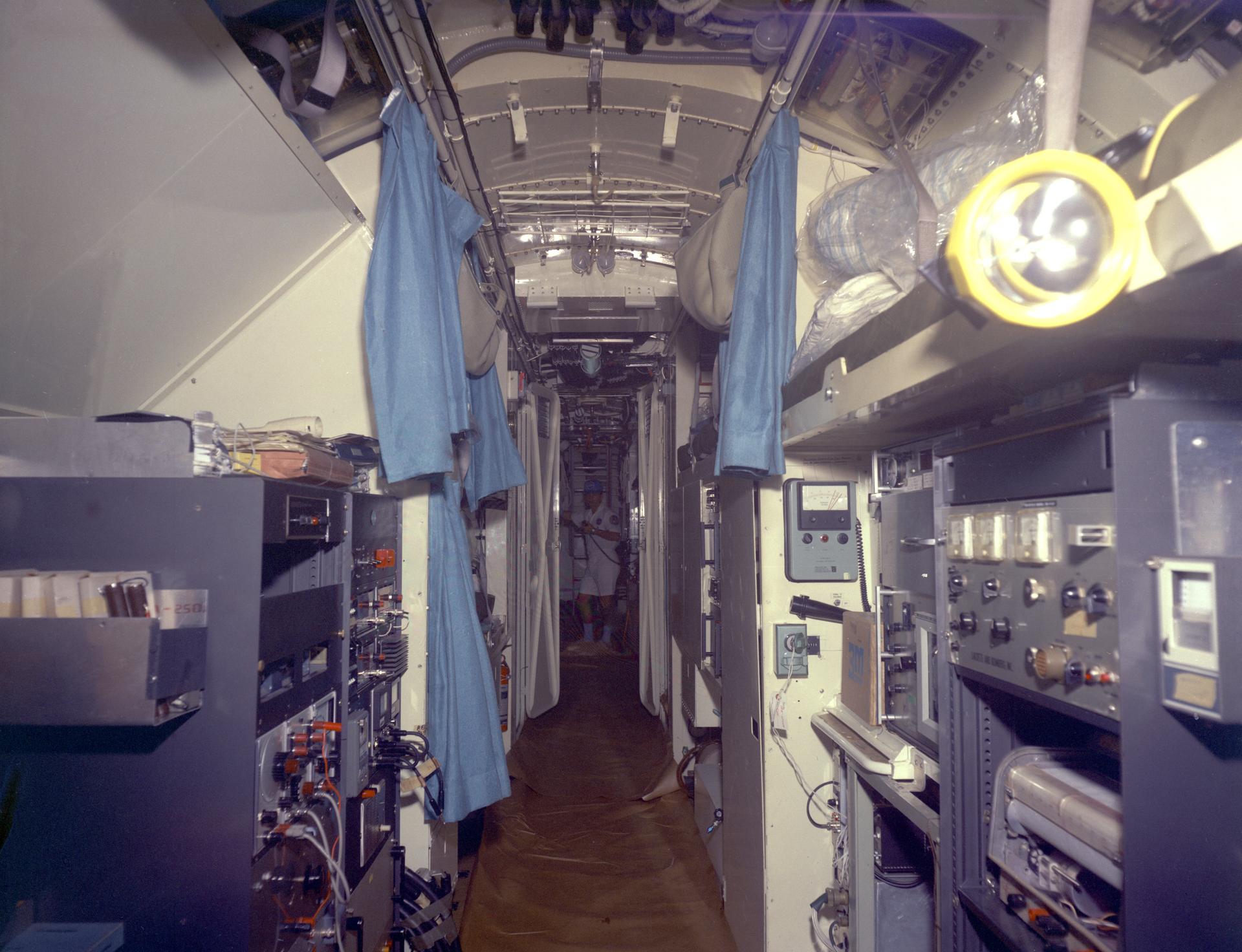In This Week’s Star
- NASA Completes Wet Dress Rehearsal, Moves Forward Toward Launch
- NASA EXPRESS Racks Achieve 1 Million Hours of Service on Space Station
- Take 5 with Lisa McCollum
- NASA Awards Facilities Engineering Design, Inspection Services Contract
- Marshall’s Out and Allied Employee Resource Group: ‘Space for Everyone Here’
- Important Contributions to Space Habitability from Ben Franklin Mission
- Artemis Concept Awards for Nuclear Power on Moon Highlighted on ‘This Week @ NASA’
NASA Completes Wet Dress Rehearsal, Moves Forward Toward Launch
NASA has analyzed the data from the wet dress rehearsal conducted June 20 and determined the testing campaign is complete. The agency plans to roll the Space Launch System (SLS) rocket and Orion spacecraft back to the Vehicle Assembly Building at Kennedy Space Center this week to prepare the rocket and spacecraft for launch.
“During the wet dress rehearsal activities, we have incrementally added to our knowledge about how the rocket and the ground systems work together, and our teams have become proficient in launch procedures across multiple sites. We have completed the rehearsal phase, and everything we’ve learned will help improve our ability to lift off during the target launch window,” said Tom Whitmeyer, deputy associate administrator for common exploration systems at NASA Headquarters. “The team is now ready to take the next step and prepare for launch.”
During the June 20 rehearsal, teams were able to validate the timelines and procedures for launch, including loading cryogenic – or supercold – propellant into the rocket’s tanks, performing the launch countdown through the handover to the automated launch sequencer, and draining the tanks. The rehearsal focused on two primary objectives and several secondary objectives to help ensure the team will be ready to launch on the Artemis I flight test.
The primary objectives were:
- Demonstrate cryogenic loading operations through all phases of propellant loading and proceed into terminal countdown, perform a recycle to T-10 minutes, a second terminal countdown, scrub, and perform propellant drain operations and safing activities.
- Demonstrate Kennedy facilities Launch Complex 39 and Launch Control Center in launch countdown configuration and demonstrate operations and connectivity required on day of launch with launch control team, support launch team, 45th Delta Space Force Eastern range, network, and design center support.
Secondary test objectives include:
- Demonstrate successful Kennedy Launch Control Center interfaces with the SLS Engineering Support Center at NASA’s Marshall Space Flight Center, Delta Operations Center of the 45th Space Force, and Johnson Flight Control and Mission Evaluation Room, including communications, operational television for monitoring the rocket and spacecraft, and telemetry in launch day configuration.
- Collect data on Orion, SLS, and mobile launcher launch configuration loads, cryogenic induced deflection and thermal data during cryogenic load and drain, as well as imagery of vehicle performance.
- Validate the timelines/procedures for rollout and rollback, launch countdown, launch window, including time to complete a recycle and setup for next T-0.
- Collect data on electromagnetic interference and compatibility with vehicle and 45th Delta Space Force Eastern range systems configured for launch day during planned flight termination system testing.
- Assemble and stage Red Crew, fire rescue crews, medical, and other supporting launch teams.
By reaching deep into the final phase of the countdown, known as the terminal count, when many critical activities occur in rapid succession, teams exercised all the assets and capabilities of the entire system: SLS, Orion, and Exploration Ground Systems, including at Launch Complex 39B and other supporting locations.
Despite a liquid hydrogen leak detected earlier in the day when increasing pressure to condition the engines, teams were able develop a plan to proceed into the terminal count with the expectation the countdown would stop after handover to the flight software for the automated launch sequencer. The software performs checks to confirm the engine temperatures are within acceptable range up to the point of the engine start sequence at T-9.34 seconds and operated correctly to halt the countdown at any point if temperatures fall outside that range, just as it would during an actual launch attempt.
“The team continues to impress me with their creative thinking and resourcefulness,” said Charlie Blackwell-Thompson, Artemis launch director at Kennedy. “Our Artemis launch team has worked quickly to adapt to the dynamics of propellant loading operations. With each milestone and each test, we are another step closer to launch.”
The launch director elected to do a single run through the terminal count due to the length of the day for the launch teams. With experience from loading operations and simulations, it is not necessary to perform a retest to demonstrate the ability to recycle and reset for another run through the terminal count. Additionally, as part of the normal procedures after the cutoff of the countdown, teams successfully completed a set of steps to “safe,” or stabilize and reconfigure, the rocket.
Engineers reviewed the few commands that would have been included within the remaining seconds of the countdown before the engine start sequence and determined those activities had been previously validated in other recent tests. The remaining commands were not part of the objectives, but the team has decided to incorporate additional checks earlier in the countdown as they fine-tune procedures, such as for engine purge bleed parameters and propellant feedline heaters used for conditioning the engines to a specific temperature range for launch. Performing these checkouts earlier in the countdown will provide the team with the best position to make the target launch window.
Last weekend, teams successfully conducted a test of the thrust vector control system on each of the twin solid rocket boosters of the Space Launch System for Artemis I while the rocket remained at Launch Pad 39B.
During the test, engineers activated the booster hydraulic power units, which are hydrazine-powered turbines attached to hydraulic pumps that provide pressure to move the hydraulic actuators that gimbal the booster nozzles. The test verified the normal startup, operations, and shutdown of a fully integrated thrust vector control system, which controls the movement of the nozzles on each of the boosters during ascent. It also verified the rocket’s avionics system using both flight and ground software for the first time. The boosters were not ignited during the test.
Once inside the Vehicle Assembly Building, teams will replace a seal on the quick disconnect of the tail service mast umbilical to address a liquid hydrogen leak detected during the rehearsal. NASA plans to return SLS and Orion to the pad for launch in late August and will set a specific target launch date after replacing hardware associated with the leak.
Artemis I will be the first integrated test of NASA’s deep space exploration systems: the Orion, SLS, and supporting ground systems. As the first in a series of increasingly complex missions, Artemis I will pave the way for long-term exploration at the Moon in preparation for human missions to Mars.
NASA EXPRESS Racks Achieve 1 Million Hours of Service on Space Station
By Rick Smith
NASA science research on the International Space Station reached an extraordinary milestone June 14.
The vital, versatile EXPRESS Racks – properly known as “EXpedite the PRocessing of Experiments to the Space Station” multipurpose payload shelving units – logged 1 million hours of combined powered duty on station. That’s the equivalent of nearly 115 years’ worth of scientific research completed in just two decades.
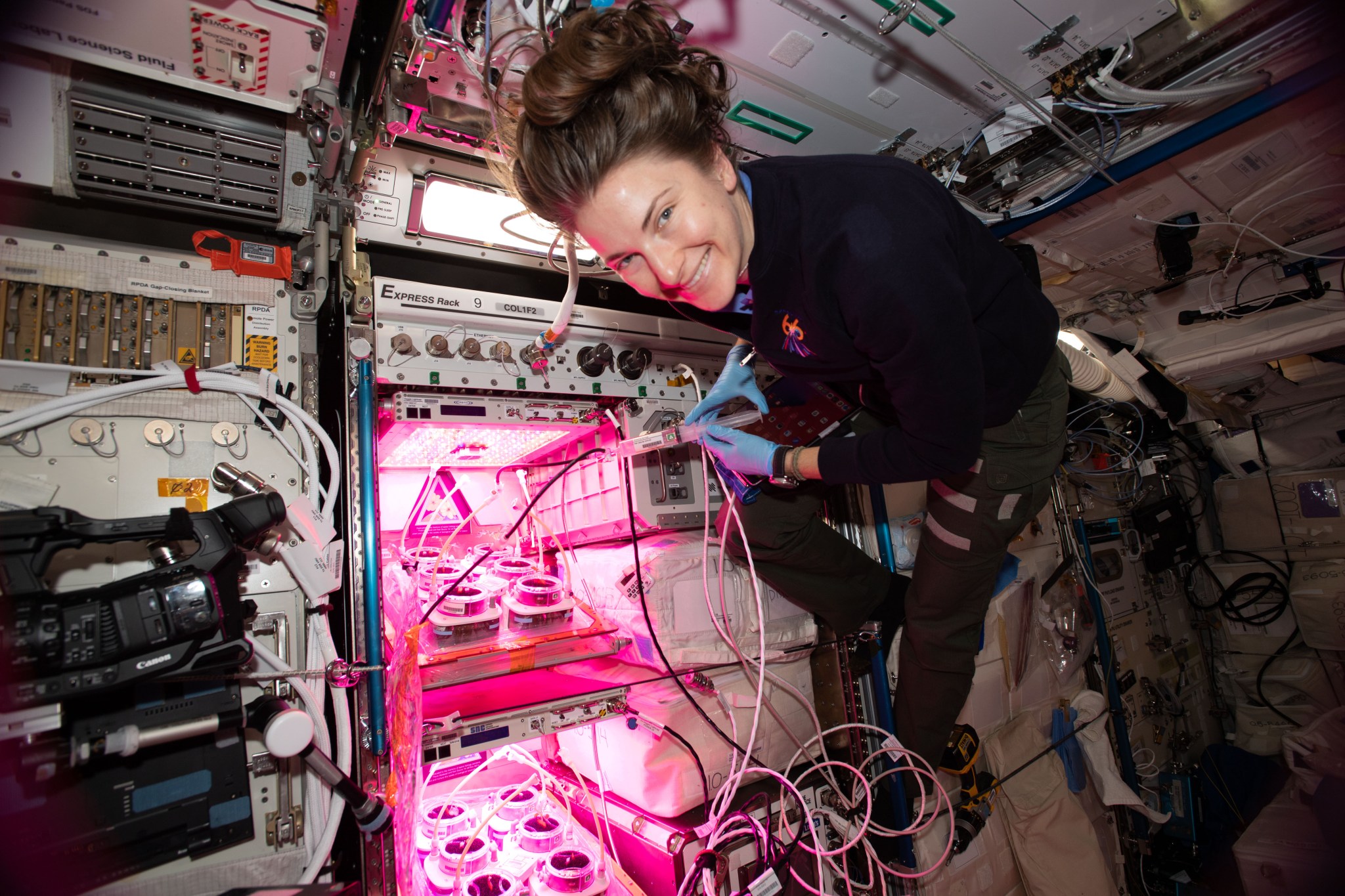
“For more than 60 years, science has spurred NASA’s technological innovation in space, firing our curiosity and furthering our reach into the cosmos,” said Jody Singer, director of NASA’s Marshall Space Flight Center, where the racks were developed, built, and tested. “The EXPRESS Racks play a key role in making our astronauts safer and more comfortable while they live and work in orbit and continue to help us unlock practical benefits to science, medicine, and countless other aspects of everyday life on Earth.”
The 12 permanent racks, the last of which was delivered in 2020, collectively support as many as 100 experiments at a time, enabling a wide variety of scientific research with practical benefits on Earth and for the Artemis-Generation explorers NASA soon will send back to the Moon and eventually to Mars.
“We rely on the expertise and talent at Marshall to optimize use of the space station, and the EXPRESS Racks are a major part of that work,” said Joel Montalbano, International Space Station program manager at NASA’s Johnson Space Center. “Achieving this milestone is an incredible testament to what we can do together to benefit the space program, the future, and the people of Earth.”
Joel Hardy, EXPRESS Racks project manager at Marshall, said his team is gratified to deliver such critical hardware – and to keep it operational, monitoring and upgrading component technology and software to yield science data for more than two decades.
“It’s a proud day for everyone at Marshall who had a hand in getting us to this milestone,” Hardy said. “It really speaks to the quality and reliability of Marshall’s design and manufacturing, and the sustained workmanship of the entire NASA team.”
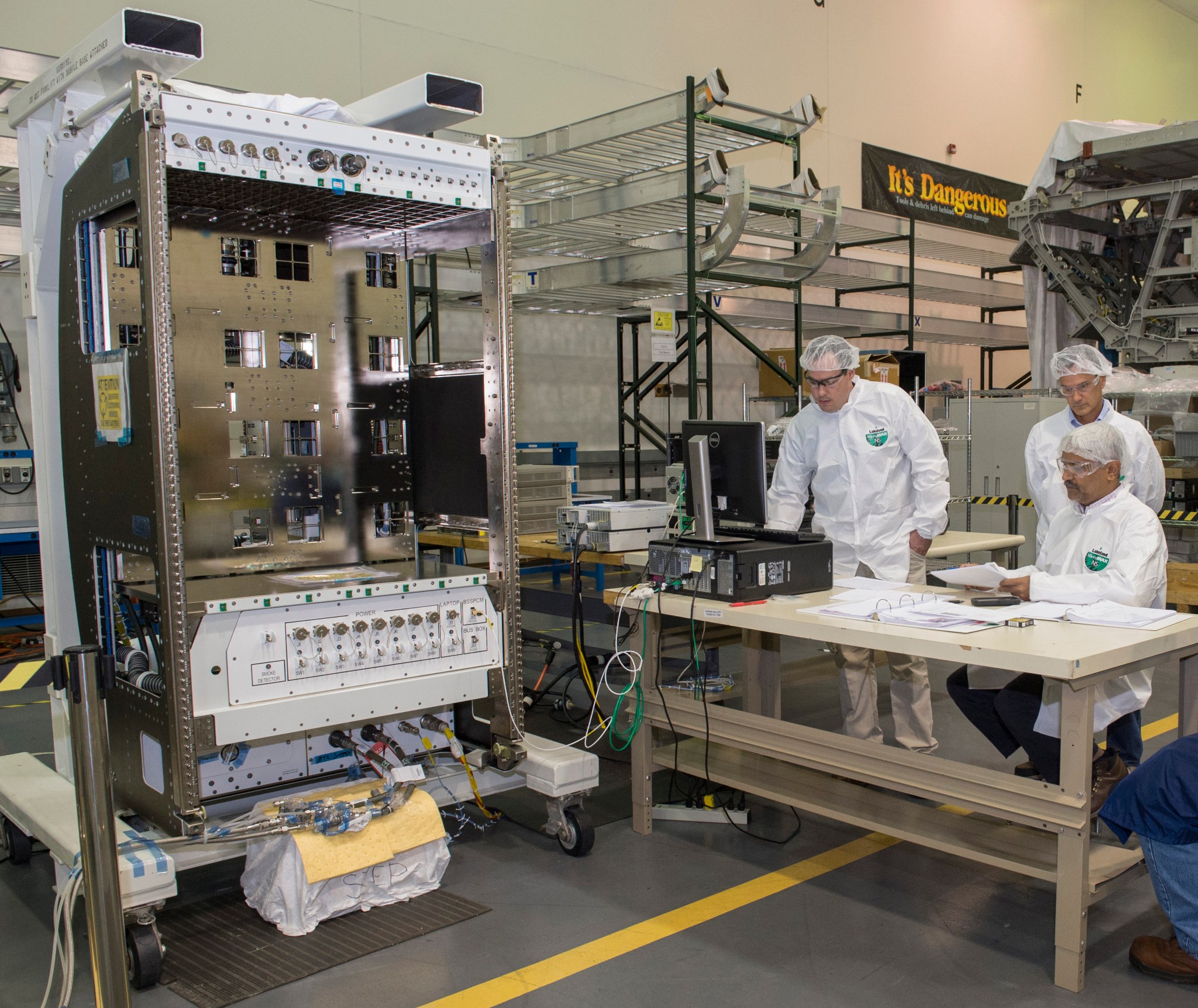
Each refrigerator-sized EXPRESS Rack houses up to eight configurable lockers and two payload drawers – all with direct access to power, cooling and heating – and command and data communications. Experiments of any duration can be conducted, removed independently in their protective storage drawers, and returned to Earth when complete.
Experiments in the racks are controlled by station crew or remotely by a cadre of two dozen specialized NASA team members in Marshall’s Payload Operations Integration Center. They monitor all aspects of science payloads on station around the clock, every day of the year, communicating in real time with the crew and researchers on the ground to ensure data is processing properly.
Rack space remains in high demand among global research partners, especially with NASA’s Commercial Crew Program picking up speed.
“It’s an exciting challenge, with more experiments going up and coming back as launch vehicle traffic to and from the station increases,” Hardy said.
Marshall rack engineers are also looking beyond the space station – which is scheduled to continue operations through at least 2030 – to NASA’s plans for the Moon and Mars.
It’s familiar ground for Lynn Farris, Marshall payload facility and research integration manager. She was on the team in 1997 during testing of the first EXPRESS Racks on the space shuttle. Astronauts relied on the shuttle’s own highly versatile “mid-deck lockers” to conduct numerous science experiments during more than 130 flights from 1981-2011 – and that hardware directly informed development of the EXPRESS Racks.
Now, EXPRESS Rack engineers and managers routinely join planning meetings for NASA’s Gateway Program, Human Landing System Program and other lunar development efforts, determining how best to integrate advanced science rack technologies with the long-term needs of future Moon missions.
“We’re taking everything we’ve learned on the racks during their first million hours of powered service on station – adapting and improving on that success for a new generation of explorers and a robust commercial space economy,” Farris said. “I can’t speak for anyone else, but I’m having the time of my life.”
The EXPRESS Racks are funded by Johnson Space Center, which leads crew and station operations for the agency. The Boeing Company of Huntsville, working with Marshall engineers, built and tested the EXPRESS Racks at Marshall during development and early construction of the space station in the 1990s.
The space station has been home to more than 242 residents from 19 countries, working with more than 4,000 scientists in 108 countries to conduct some 3,000 total research investigations.
Smith, a Manufacturing Technical Solutions employee, supports Marshall’s Office of Strategic Analysis & Communications.
Take 5 with Lisa McCollum
By Daniel Boyette
As lead for the Commercial Crew Program support team at NASA’s Marshall Space Flight Center, Lisa McCollum plays a key role in helping ensure humanity’s continued scientific endeavors in microgravity. She’s also passionate about engaging those who will lead the next generation of space exploration.
McCollum has long been an advocate of educational outreach in the science, technology, engineering, and math, or STEM, fields.
“It’s important to me because we need great, capable people in the pipeline to fill future STEM jobs,” said McCollum, who began her NASA career in 2012. “We need students from every background to get exposed to the possibilities of what jobs in the STEM fields might look like. For those who are interested, it’s important they have opportunities to explore their interests, and encouragement to continue. We need to provide resources to do that for students who might not have those opportunities readily available where they are.”
Over the years, McCollum has been involved in numerous STEM outreach activities, including volunteering at the Marshall-led Human Exploration Rover Challenge, speaking to university students about her job experiences, and completing an undergraduate senior design project that provided a catapult for an eighth-grade science classroom.
“I don’t think it’s ever too soon to start mentoring,” she said, “and there are plenty of opportunities for our workforce to engage through Marshall or local sections of technical societies. It is always a lot of fun interacting with students.”
Question: What are your primary responsibilities as lead for Marshall’s commercial crew support team?
McCollum: I have two primary roles. As deputy manager for the commercial crew Launch Vehicle Systems Office, I directly support the office manager at Kennedy Space Center in managing the certification of commercial crew launch vehicles. I focus on the SpaceX Falcon 9 and work with the joint Marshall and Kennedy launch vehicle team to ensure risks are identified, assessed, and communicated to the program and that certification is completed for each flight.
As manager of commercial crew support at Marshall, I am the primary center point of contact for Commercial Crew Program management and Marshall center leadership. My team manages commercial crew resources at Marshall and makes sure our support is meeting the needs of our customers. Along with Marshall engineering and Safety and Mission Assurance leads, I make sure center leadership is informed and prepared to participate in the agency flight readiness process for commercial crew flights.
Question: What is the most exciting aspect of being part of the Commercial Crew Program?
McCollum: This is human spaceflight! The Commercial Crew Program returned crew to space from American soil – and now we are doing that on a regular basis. It is hard to describe how I’ve felt when I’ve stood in the back of the room with the on-console team moments before a launch. The team’s intense concentration on the data during the count and launch is followed by absolute joy and celebration when the launch vehicle successfully completes a mission, and our crew has safely reached orbit. During those launches, I think about all the hard work by our team and our partners that has helped get us to that point. I know how hard each of our team members work to ensure a safe flight for our crew, and especially in those moments, I just couldn’t be any prouder to be part of this team.
Question: Multiple NASA centers, including Marshall, support commercial crew. What have you found to be the keys for collaboration and success?
McCollum: Our team has great relationships with our colleagues at Kennedy, Johnson Space Center, and with our commercial partners. It is really interesting to notice the differences in cultures across each organization and yet see our team cross those divides to work really well together. I think the most important thing is a shared commitment to the mission – we are all working toward the same goal, no matter which center or partner we work for, and that remains at the heart of everything we do. Beyond that, recognizing and respecting what each of our colleagues bring to the team in terms of knowledge, skill, and expertise is really important. Finally, having open conversations about what is working well and what isn’t help us not only improve our processes, but also strengthen relationships within the team.
Question: What led you to pursue an education and career in engineering?
McCollum: I grew up in an extended family that was always about cars, motorcycles, and planes. At one point when I was in elementary school, my dad and some friends got into gyrocopters, which were delivered in big crates with a lot of assembly required. He and his friends and brothers worked for months building that thing in my parents’ garage, and then it flew! There was a small airstrip within sight of our house so I could always see them flying in and out. When I got to college, I was undecided on a major. I took an introductory course in aerospace engineering, since I thought flying was cool. I really enjoyed the team projects – some real successes and huge flops!
Question: What do you enjoy doing with your time while away from work?
McCollum: My biggest hobby is probably plants – I really enjoy gardening and have way too many houseplants. It’s a great way for me to get some quiet focus time to recharge my inner introvert, and I’ve connected with a lot of really cool people from all over via plants. My husband, Nick, and I share a hobby for cars, trucks, and bikes – we enjoy getting out and riding our motorcycles or driving, whether it be road trips, cruises with friends, off-road rides, etc.
Boyette, an LSINC employee, supports Marshall’s Office of Strategic Analysis & Communications.
NASA Awards Facilities Engineering Design, Inspection Services Contract
NASA has awarded the Facilities Engineering Design and Inspection Services II contract to Vanguard Pacific LLC of Foley, Alabama, to provide architect and engineering design services at the agency’s Marshall Space Flight Center.
The firm-fixed-price, indefinite-delivery/indefinite-quantity contract has a potential mission services value of $25.6 million and a maximum potential value of $22.5 million, for a total value of $48.1 million. The contract begins Aug. 1, with a one-year base period, followed by four one-year option periods that may be exercised at NASA’s discretion.
Under the scope of work specified in the contract, Vanguard Pacific will be responsible for design services in support of the Minor Construction Contract for projects of $1 million or less. The scope also includes master planning, surveillance, and inspection services.
Marshall’s Out and Allied Employee Resource Group: ‘Space for Everyone Here’
By Rick Smith
With the bustle of activity at NASA’s Marshall Space Flight Center this summer surrounding the Space Launch System, the Artemis program, the International Space Station, and other high-profile science and spaceflight endeavors, it’s a complex, energizing time to be part of the NASA team.
As Pride Month nears its conclusion on June 30, the same is arguably true for many within the lesbian, gay, bisexual, transgender, and queer community.
But just as we gaze at the Moon and Mars and acknowledge the gulf of space we must cross to reach them, the co-chairs of Marshall’s Out and Allied employee resource group emphasize how far we still have to go to achieve full equity and inclusion for all workers and all Americans – regardless of race, age, sexual orientation, or other factors.
That inclusiveness is a key goal of the Out and Allied group – and drives the NASA Equity Plan, which seeks to make equity a core component of NASA’s mission, identifying and removing career barriers that historically have hindered underserved and underrepresented communities.
Barry Roberts, chief of the Engineering Directorate’s Natural Environments Branch, helped found Marshall’s first LGBTQ+ advocacy group in 2009. He went on to co-write the charter for the Out and Allied employee resource group, founded in 2020.
“I joined the group mainly to make Marshall a more welcoming place for everybody,” he said. “Our idea back then was if you don’t come out, nobody will know you’re there. We wanted to create awareness and advocacy at the center.”
The Marshall resource group – which currently includes 34 members – gathers virtually twice a month to discuss issues, plan support for a variety of outreach events, and enjoy some shared community empowerment. They work hand in hand with Marshall’s Office of Diversity and Equal Opportunity, and with the group’s NASA Senior Executive Service sponsor, Tia Ferguson, director of Marshall’s Space Systems Department. The co-chairs also meet virtually every other month with LGBTQ+ employee resource group chairs across NASA field center to share speakers, engagement opportunities, and insights.
Currently, the group is developing its presence on Inside Marshall, and continues to actively participate in community events across the Tennessee Valley, including Huntsville’s high-profile Rocket City Pride Fest, National Coming Out Day, and LGBTQ History Month – all of which occur in October. Those public events are a highlight, enabling direct interaction with a cross-section of college students and young professionals considering positions across the agency, said NASA meteorologist Dr. Andrew Molthan, deputy chief of Marshall’s Earth Science Branch.
“It’s a chance to answer their questions and to tell them that NASA remains an inclusive and welcoming place to work,” Molthan said. He’s also frank about the hurdles, he noted, and stresses that progress at NASA Headquarters and Ames Research Center, for example – both situated in progressive urban cities – often can proceed at a different pace than it does at Marshall and other field centers in the South.
“There are variables we still need to address across our communities, our contract partners, and our different local cultures,” he said. “We strive to be realistic about the challenges we continue to face to present a united, equitable workplace for everyone.”
To help overcome those hurdles, the group regularly encourages non-LGBTQ+ team members to join, said co-chair Emily Naderi, an equal employment opportunity specialist in Marshall’s Office of Diversity and Equal Opportunity. Allies are always welcome, she said – and they’re crucial to the cause of inclusion. So too are LGBTQ+ team members who may not yet be ready to come out, personally or professionally.
“There is space for everyone here,” Naderi said. “A lot of negative perceptions about the community stem from a lack of experience, often from people who don’t realize they already know, work with, and respect members of that community. By coming together as one caring, supportive team, we are stronger for it – and so is NASA.”
As Pride Month concludes, the Marshall resource group is committed to sustaining its influence year-round – and looking to the future.
“Amazing things can happen when people open themselves to new experiences,” Naderi said. “Just show up. You might meet someone you’ll work with for the rest of your career – or you might even make a lifelong friend.”
Learn more about Marshall employee resource groups here, or contact Roberts, Naderi, or Molthan via email with questions. A monthly “Talk Equity, Diversity, & Inclusion” newsletter also is available on Inside Marshall.
Pride Month is celebrated each June in memory of the 1969 Stonewall uprising in New York. The six-day clash was sparked by a police raids on the Stonewall Inn, a bar serving Manhattan’s gay community. The event has been long recognized as a tipping point for the gay liberation movement and a catalyst for expanding awareness and acceptance of non-binary gender and lifestyle politics in the United States.
Smith, a Manufacturing Technical Solutions employee, supports Marshall’s Office of Strategic Analysis & Communications.
Important Contributions to Space Habitability from Ben Franklin Mission
By Brian Odom
Living off the planet has never been easy. Capturing a bit of the Earth environment for the trip into space is critical no matter how short the mission. But beyond the goal of providing air, water, and food, what other factors should be considered to make human space exploration possible, and to some degree, palatable? What are the long-term effects of space travel both on the physiology and psychology of the crew, and how can these be mitigated?
In the early years of the space program, no one knew the answers to these questions or had a good idea of how to get them. What was needed was an isolated laboratory combining a harsh environment with a rigorous program of scientific discovery. In the summer of 1969, NASA utilized a now largely forgotten expedition to try and answer its questions.
The undersea laboratory chosen for the mission was the Ben Franklin (PX-15) – a submersible vessel conceived by Swiss Oceanographer Dr. Jacques Piccard and designed, built, and operated by the Grumman Aerospace Corporation. Known as the Gulf Stream Drift Mission, the 30-day study was supported by the Naval Oceanographic Office and sought to explore the environment of the Gulf Stream as the vessel drifted north at a depth varying between 600 to 2,000 feet. The mission gave NASA an opportunity to observe the effects of prolonged isolation on the six-person crew while exploring concerns around psychology and physiology, habitability, microbiology, and maintainability in spacecraft design.
Habitability studies at NASA weren’t new. The agency had conducted various ground-based static simulator or chamber studies along these lines from its founding in 1958. What made the Ben Franklin mission different was its ability to move beyond issues such as the effects of confinement, social isolation, deprivation, and cramped space by adding the elements of a meaningful mission, hostile environment, operational stress, abort difficulty, remote operations, and the sustained motivation that resulted from participating in a real scientific undertaking. As an analog for future space stations, the mission provided an opportunity to anticipate challenges faced in long-duration space flight.
Leading the NASA component of the mission was Chester “Chet” May, an aerospace engineer then in the Mission and Payload Planning Office of Program Development at NASA’s Marshall Space Flight Center. The mission wasn’t May’s first experience with space analogies. Earlier at Wright Patterson Air Force Base at Dayton, Ohio May had conducted tests in the weightless environment produced by the KC-135 aircraft during parabolic flights. Those experiments led to the development of mechanical weightless simulators and produced new space maintenance techniques and astronaut maneuvering units.
Interviewed before the mission, May described what stood at the core of the effort. “We are self-contained down here – we have no ties to the surface,” he said. “So, here we are, away from regular society, away from the actual social environment which each of us normally move. This is one of the things we are interested in in the space program: How does man effectively perform isolated from his normal social environment?”
If national attention was important to the mission, the organizers could not have picked a worse spot on the calendar. Overshadowing the Gulf Stream mission was the flight of Apollo 11, which landed on the Moon on July 20. Just before setting out from West Palm Beach, Florida, on July 16, the crew of the Ben Franklin sent a message to the crew of Apollo 11, the text of which read, “We all wish you a fair wind and a following sea, good luck!”
After drifting in the Gulf Stream for 31 days and traveling over 1,400 nautical miles, the Ben Franklin surfaced Aug. 14, 1969. May and the crew were transported by the U.S. Coast Guard to Portland, Maine. The trip provided NASA with a wealth of new information about team dynamics, hygiene, health, and provisioning. Some were easily predicted, such as the crew’s dislike of the available food and that reading and listening to music proved beneficial. Other findings pointed to more unforeseen, but serious issues. The study found that the crew exhibited increased signs of depression during the midpoint of the mission and began to take meals alone, reflecting both a need for privacy and avoidance of conflict. The results of this experiment provided a baseline for human factors in the design and development of subsequent spacecraft.
The experience of the crew aboard the Ben Franklin never garnered many headlines and remains largely forgotten today. However, the lessons learned from that brief excursion along the bottom of the Gulf Stream informed later successes of Skylab, Spacelab, and the International Space Station. As NASA journeys back to the Moon with the Artemis program, it’s worth considering just how far the agency has come since the summer of 1969.
For more information on the Ben Franklin mission, visit here. Watch the video “Meanwhile, At the Bottom of the Ocean” here.
Odom is Marshall’s historian and NASA’s acting chief historian.
Artemis Concept Awards for Nuclear Power on Moon Highlighted on ‘This Week @ NASA’
NASA and the U.S. Department of Energy’s selection of three design concept proposals for a fission surface power system design is featured in “This Week @NASA,” a weekly video program broadcast on NASA-TV and posted online. The power system could be ready to launch on a demo mission to the Moon by the end of the decade.
Fission systems are relatively small, lightweight, and could enable continuous power regardless of location, available sunlight, or other environmental conditions. This technology would benefit future exploration under NASA’s Artemis program.
The power system development is funded by the Space Technology Mission Directorate’s Technology Demonstration Missions program, which is located at NASA’s Marshall Space Flight Center. Marshall manages the Space Launch System rocket, which is the foundation for the agency’s deep space exploration plans with the Artemis program.
For more information about NASA’s investments in space technology, visit here.
View this and previous episodes at “This Week @NASA” on NASA’s YouTube page.





























